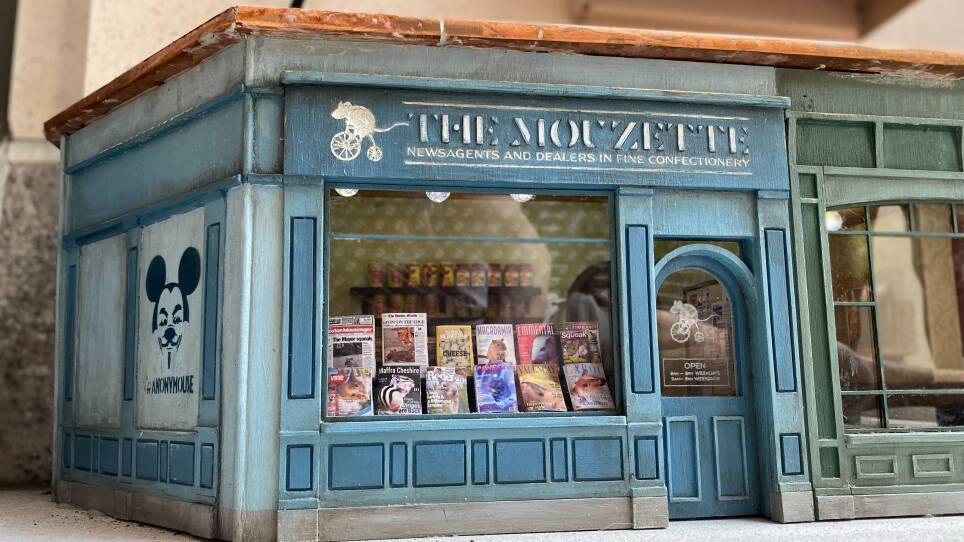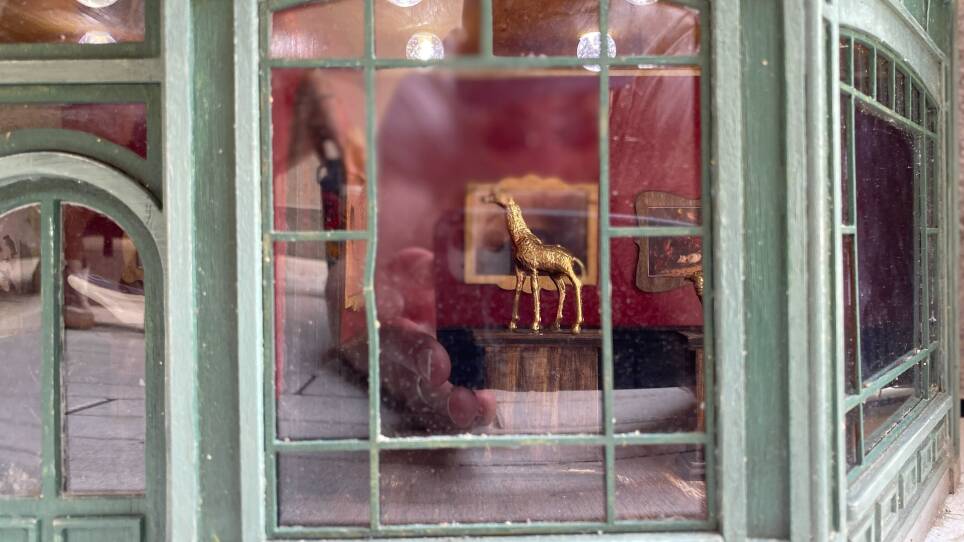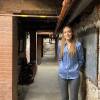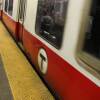Something odd happened in Boston recently.
Tiny, intricate buildings — buildings that look real, but are really small — started popping up along streets in and around the city. There’s a tiny news stand called the Mouzette, with newspapers like the Boston Moussenger and magazines like Squeak and National Micrographic.

There’s a miniature art museum, the Massachusetts Mouseum of Fine Art. There’s a rodent-sized fire station and a restaurant advertising cheese and crackers.
They're made by a Swedish art collective called Anonymouse, a play on the hacker group Anonymous. Anonymouse posted pictures of these mini buildings online, but didn't say where they were.
And so the hunt was on.
To preserve some of the magic, we won’t reveal the locations of the mouse houses. But you can find photos of them below.

Anonymouse declined an on-tape interview for GBH's Morning Edition, but they did answer our questions in an email. Here's what they said:
Jeremy Siegel: What is the intention of the installations?
Anonymouse: It started off as a creative outlet for us and we wanted to make something that, if we were still kids, [we] would find charming when we discovered it on the street.
In this project we like to imagine a world, slightly out of sight, where small animals live quite like we do but recycle things that we have lost or thrown away. We believe that at some point most children [do] the same, and we wanted to suggest that it might be real.
It’s also a question about the public space. What do we want to use it for? How do we want it to look? The answer doesn’t have to be a restaurant for mice but that’s just for the moment. Maybe something else can come after.
So in essence it's about spreading a little bit of everyday magic to people who happen to stumble upon them. We invite them to play with us or inspire them to make their own something.
Siegel: Why Boston?
Anonymouse: WS Development [A real-estate company based in Chestnut Hill] contacted us and invited us to use small spaces in the Seaport and surrounding parts of Boston. They have invited contemporary artists before, and we felt it was a good fit. We don’t want to sell anything and we are a bit stubborn when it comes to letting art be art. And they let us do that.
Siegel: What sort of response have you gotten?
Anonymouse: People are very positive. This started as a street art project and still is, but it has also transferred in to public art in some of the collaborations. And as such we have chosen an almost ”non violent” approach to this. We don’t destroy anything, everything is removable and is only there for a short period of time. And we think that this is important in the meeting with people.
The dioramas are not large or threatening. They're not hard to understand, you don’t need any prior knowledge to enjoy [them]. We don’t want anyone to feel left out.
And it's always fabulous to see the excited comments and photos on Instagram. It feels great to be able to create this in the U.S., we have only been in a few places around Europe before, mainly in Sweden.
Siegel: Why mice?
Anonymouse: Well, we grew up with the movies of Walt Disney and Don Bluth, and with the books of Beatrix Potter and Astrid Lindgren, there's something fascinating with a parallel world.
Siegel: How do you choose the specific locations in a city?
Anonymouse: We're always looking for little nooks and corners that would fit, and it can take some time. After six years we've almost used up all there are in our hometown!









